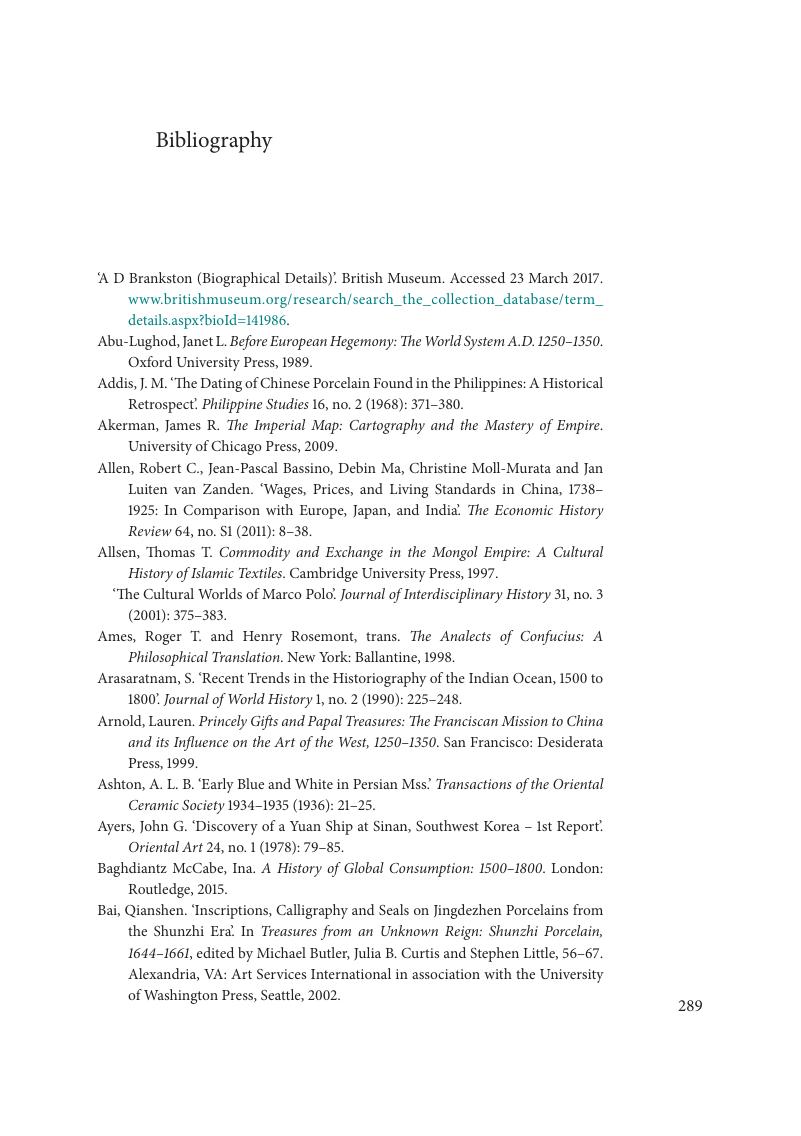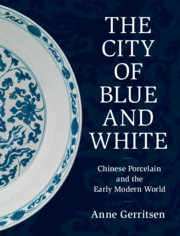Book contents
- The City of Blue and White
- The City of Blue and White
- Copyright page
- Dedication
- Contents
- Figures
- Maps
- Table
- Acknowledgements
- 1 The Shard Market of Jingdezhen
- 2 City of Imperial Choice: Jingdezhen, 1000–1200
- 3 Circulations of White
- 4 From Cizhou to Jizhou: The Long History of the Emergence of Blue and White Porcelain
- 5 From Jizhou to Jingdezhen in the Fourteenth Century: The Emergence of Blue and White and the Circulations of People and Things
- 6 Blue and White Porcelain and the Fifteenth-Century World
- 7 The City of Blue and White: Visualizing Space in Ming Jingdezhen, 1500–1600
- 8 Anxieties over Resources in Sixteenth-Century Jingdezhen
- 9 Skilled Hands: Managing Human Resources and Skill in the Sixteenth-Century Imperial Kilns
- 10 Material Circulations in the Sixteenth Century
- 11 Local and Global in Jingdezhen’s Long Seventeenth Century
- 12 Epilogue: Fragments of a Global Past
- Notes
- Bibliography
- Index
- References
Bibliography
Published online by Cambridge University Press: 24 February 2020
- The City of Blue and White
- The City of Blue and White
- Copyright page
- Dedication
- Contents
- Figures
- Maps
- Table
- Acknowledgements
- 1 The Shard Market of Jingdezhen
- 2 City of Imperial Choice: Jingdezhen, 1000–1200
- 3 Circulations of White
- 4 From Cizhou to Jizhou: The Long History of the Emergence of Blue and White Porcelain
- 5 From Jizhou to Jingdezhen in the Fourteenth Century: The Emergence of Blue and White and the Circulations of People and Things
- 6 Blue and White Porcelain and the Fifteenth-Century World
- 7 The City of Blue and White: Visualizing Space in Ming Jingdezhen, 1500–1600
- 8 Anxieties over Resources in Sixteenth-Century Jingdezhen
- 9 Skilled Hands: Managing Human Resources and Skill in the Sixteenth-Century Imperial Kilns
- 10 Material Circulations in the Sixteenth Century
- 11 Local and Global in Jingdezhen’s Long Seventeenth Century
- 12 Epilogue: Fragments of a Global Past
- Notes
- Bibliography
- Index
- References
Summary

- Type
- Chapter
- Information
- The City of Blue and WhiteChinese Porcelain and the Early Modern World, pp. 289 - 320Publisher: Cambridge University PressPrint publication year: 2020



